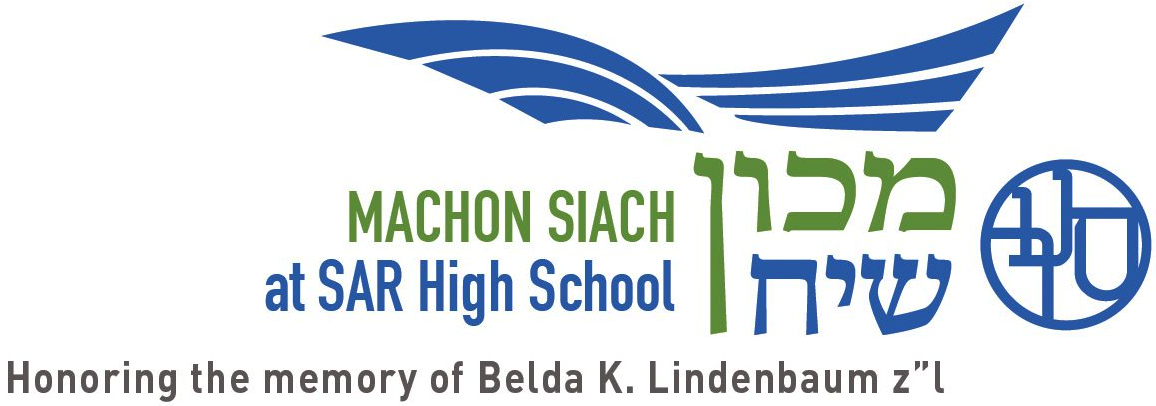
A Pedagogy of Okimta
As an educator, I am presented with a unique set of challenges each time I teach an okimta. At face value, it appears the Gemara is playing fast and loose with the mishna. My students want to know: didn’t chazal know their interpretation is not what the mishna originally intended? Is the particular okimta they chose arbitrary, or is there meaning embedded in it? What gives chazal the authority to “change” the mishna? And if they have the authority, why don’t we?
These are questions of import and how I choose to explain both in general and in specific can shape a student’s worldview of Gemara. One approach to these questions, adopted in certain segments of the yeshiva community, is to simply say that the okimta is actually the original intention of the mishna. But my goal is to have students understand the words in front of them, and this answer is not satisfactory- an okimta appears to be changing the meaning of the mishna! Through looking at an okimta in one particular sugya I’d like to explore a “pedagogy of okimta;” a way to approach okimta that helps students (and teachers) grapple with what chazal are intending to accomplish.
Bava Kamma 32a:
מתני׳ שנים שהיו מהלכין ברה”ר אחד רץ ואחד מהלך או שהיו שניהם רצין והזיקו זה את זה שניהם פטורין:
Our mishna is found in the context of a series of mishnayot exploring nezek and use of public space. The mishna states that if two people are walking, or one is walking and one is running, and they both injure each other, both parties are exempt. As is typical, the mishna states the case law but does not provide a rationale. The assumption behind the mishna appears to be that as both parties had a right to travel – either by running or by walking – and as we cannot determine who did the damage, they are both exempt.
גמ׳ מתני’ דלא כאיסי בן יהודה דתניא איסי בן יהודה אומר רץ חייב מפני שהוא משונה ומודה איסי בע”ש בין השמשות שהוא פטור מפני שרץ ברשות
The Gemara introduces a beraita that quotes the opinion of Issi Ben Yehudah that in the case of one party walking and one party running, the runner is liable, as he/she is doing something unusual. At first glance, the issue seems to be one of expectations; we would not expect someone to be running in the public space; therefore the runner is liable when damage occurs. Issi agrees, however, that on Friday at sunset the runner is exempt – מפני שרץ ברשות. How are we to understand the notion of רץ ברשות? At this point in the sugya it appears that רץ ברשות is the opposite of משונה– the runner is liable during the week because it is unexpected, and exempt on Friday afternoon because we are to expect people running about preparing for Shabbat.
א”ר יוחנן הלכה כאיסי בן יהודה ומי אמר רבי יוחנן הכי והאמר ר’ יוחנן הלכה כסתם משנה ותנן אחד רץ ואחד מהלך או שהיו שניהם רצין פטורין. מתני’ בע”ש בין השמשות.
The Gemara then introduces a statement of Rabbi Yochanan that declares that the halakha follows the opinion of Issi. However, this statement contradicts another statement of Rabbi Yochanan, which affirms that the halakha always follows the anonymous opinion in the mishna. Enter the okimta to solve the problem: it must be that our mishna, which exempts the runner, is discussing a case of erev Shabbat. If the exemption of the runner is only on erev Shabbat, there is no contradiction between the mishna and the opinion of Issi.
At this point in the sugya, my students raise their eyebrows. The mishna does not say anything about erev Shabbat! It clearly meant to provide a generally applicable rule. How could chazal completely redefine the mishna? The real pedagogical opportunity begins here. I like to take a step back and ask my students what they think motivated this okimta. If chazal are reading the mishna against the grain, what was their reason to do so? The easy response is a technical one: there are two contradicting statements of Rabbi Yochanan that needed to be resolved. I push: the problem might be technical, but the solution is not. When chazal offer a particular okimta, they are heading down a deliberate path. Why solve the problem at all as opposed to letting the contradiction stand? Why solve the problem by redefining the mishna as opposed to redefining the statement of Issi? And why redefine the mishna in this particular way?
While we may not be able to answer these questions with certainty, it is our responsibility as teachers to develop an approach that meaningfully explains chazal’s decisions. But more than any specific answer, I want my students to appreciate that an okimta is a deliberate decision, and it is our responsibility as students of chazal to do our best to understand what undergirds this decision. Given that chazal could have made a different decision, what were they trying to communicate by redefining the mishna in this particular way? Asking this question propels us from the realm of the merely technical to the ideological; we now enter the terrain of beliefs and values.
In choosing this okimta, chazal have deviated from the halakha set out in the mishna that the runner is exempt. The halakhic outcome now is that the runner is liable in all cases except for erev Shabbat. Is the choice of this okimta motivated by a belief that public space should function differently than the way laid out in the mishna?1 Might changes in time and place between the period of the tannaim the period of the stam affect this belief? Even when I can’t hit on the THE answer to these questions, the more I can open possibilities about what might have been motivating chazal, the more apparent it becomes that chazal were making religiously motivated and skillful choices. My main aim in teaching okimta is to instill a sense of אמונת חכמים in my students; a sense that chazal were not randomly playing word games but were constructing thoughtful and deliberate arguments. When my students are able to tease out the possible agenda of an okimta on one daf, and then on the next, over time an appreciation for the values and wisdom of chazal takes root. Chazal are rooted in and responsible to the words of the mishna. Instead of jettisoning the mishna to adapt to their worldview, they creatively interpret it. The model of okimta keeps the text fixed while allowing for new possibilities of interpreting it. The okimta instills אמונת חכמים by providing a model for Modern Orthodox students of fealty to tradition while allowing for change over time.
As the sugya continues, an approach to the question of “why this okimta” begins to emerge.
ממאי מדקתני או שהיו שניהם רצין פטורין הא תו ל”ל השתא אחד רץ ואחד מהלך פטור שניהם רצין מבעיא אלא הכי קאמר אחד רץ ואחד מהלך פטור בד”א בע”ש בין השמשות אבל בחול אחד רץ ואחד מהלך חייב שניהם רצין אפי’ בחול פטורין
The Gemara feels the need to “prove” its okimta by pointing to extraneous language in the mishna. This is another choice – there are many okimtot that are not read back into the text for substantiation. I ask my students why they think the Gemara chose to substantiate this one; is it simply because the “proof” is there? Because real halakhic change is involved in the shift? For some other reason? The conversation is generative, and students debate the possibilities. While I might let the questions stand, in raising them I have made the point that a proof is not just a throwaway line; its presence should push us to consider its import.
אמר מר ומודה איסי בע”ש בין השמשות שהוא פטור מפני שרץ ברשות בע”ש מאי ברשות איכא כדר’ חנינא דאמר ר’ חנינא בואו ונצא לקראת כלה מלכתא ואמרי לה לקראת שבת כלה מלכתא רבי ינאי מתעטף וקאי ואמר בואי כלה בואי כלה:
At the end of the sugya the Gemara returns to the beginning and attempts to define the רשות referred to by Issi. Instead of claiming that the runner is exempt because people are expected to run on erev Shabbat, in linking to the statement of Rabbi Chanina, the Gemara is clearly staking a claim that the essence of erev Shabbat itself confers a special status on the runner. On erev Shabbat, the rules that regularly govern public space are changed. It is not merely that we expect people to be running on erev Shabbat; it is that someone who runs in preparation for Shabbat has an exemption for damage they might cause in the public space that would not take effect during the rest of the week.
With this explicit definition of רשות, the Gemara is making a religious point about how we treat preparation for Shabbat. These last lines are hence our key to unlocking the sugya and allow us to view it as a sugya that had an agenda from the very start. We can argue that the Gemara chose to align itself with Issi not for purely technical reasons, but to convey a religious message about the importance of preparation for Shabbat. My students can now appreciate the okimta as much more than an arbitrary wordplay but as an attempt to convey a value, and one that has significant meaning for their own lives.
This point is amplified when we compare our Bavli sugya to parallels in the Tosefta and Yerushalmi.
תוספתא בבא קמא פרק ב הלכה יא
שנים שהיו מהלכין ברשות הרבים, אחד רץ ואחד מהלך, שניהם רצין, שניהם מהלכין, שניהם ממשמשין, והזיקו זה את זה – שניהן פטורין, שלזה רשות להלך ולזה רשות להלך. איסי הבבלי אומר: הרץ חייב, מפני ששינה. ומודה איסי הבבלי שאם היה ערב שבת עם חשיכה פטור.
At first glance, the Tosefta’s version of Issi’s statement seems quite similar to the Bavli’s. Upon more careful consideration, there is an important variation in language. The Bavli’s version of the exemption for erev Shabbat was phrased as ומודה איסי בע”ש בין השמשות שהוא פטור מפני שרץ ברשות. In the Tosefta no rationale is given – ומודה איסי הבבלי שאם היה ערב שבת עם חשיכה פטור is simply a statement of law. It is the language of רשות used by the Bavli that allows it to convey its message regarding the unique nature of erev Shabbat. Absent the language of רשות, our understanding of the exemption from liability on erev Shabbat is that it is simply a result of the expectation that people will be running at that time. It is the inverse of, and follows directly from, מפני ששינה.
The Yerushalmi also does not contain the language of רשות:
ירושלמי בבא קמא פרק ג הלכה ז, ג ע”ד
יוסי הבבלי אומר: היה רץ ברשות הרבים והזיק – חייב, ששינה המנהג. היה ערב שבת בין השמשות פטור. אמרי, הוא יוסי הבבלי הוא יוסי בן יהודה הוא יוסי קטנתה,
ולמה נקרא שמו קטונתה? שהיה קטן חסידים.
Here again we have a simple statement of exemption absent a rationale. We now can conclude that the language of רשות is unique to the Bavli. Given that it is the language of רשות that helps the Bavli frame the exemption as a religious rather than technical one we have now strengthened our point about the Bavli sugya having an agenda. The Tosefta and Yerushalmi base the exemption of erev Shabbat on what be expected in the public space. The Bavli introduced the language of רשות and turned that exemption into a message about the importance of preparing for Shabbat. In this case looking at the antecedents of the Bavli sugya is not merely an academic exercise. It reveals with greater clarity the choices the Bavli made and the religious agenda it had. That in turn helps me make meaning of the sugya with my students.
Broadening out from this specific sugya, the pedagogy of okimta outlined here involves asking a series of questions with my students: What choices did chazal make here? What alternative choices could they have made? What message did they intend to convey in this sugya and what did they care about? Are there earlier sources that might help us uncover answers? At times (as I hope has been laid out for this sugya), I will be able to make a strong case that chazal were shaping a religious message. But, regardless of any specific answers or lack thereof, habituating my students to ask the set of questions outlined above helps them appreciate the depth and breadth of what chazal attempted to do in each and every sugya. It is our job to search for their message, and when we ask the right questions, most often we can locate it.
In conclusion, a word about rabbinic authority. A lingering question my students often have about okimta is “if chazal had the authority to play with the mishna in this way, why don’t we?” Engaging in the process, over and over again, of asking what choices chazal made and what their intended message is, cultivates, in a deep way and over the long term, a real אמונת חכמים. When we, both students and teachers, appreciate that okimtot, drashot, and limudim are not random but were conscious choices made by people balancing a canon of texts with their own religious outlook, we can’t help but stand in awe of the majesty of the project. Asking questions about the choices chazal made is not simply an intellectual exercise; it is also an exercise in humility. And so the best response to “if chazal had the authority to play with the mishna in this way, why don’t we?” is, “let’s keep learning.”



